Back when hearths were stone/masonry chimneys with an open fireplace, the addition of a stove brought the need to exhaust its smoke/fumes. This was usually accomplished one of three ways: the first of the three ways is if the stove's exhaust port was low enough to make use of a fireplace it could be ducted with metal chimney pipe to the flue opening of the fireplace; Franklin style fireplaces were often low and were piped to exhaust to the flue of an open fireplace, in this case stoves were made low to be setup the same as the Franklin fireplaces and therefore are referred to as Franklin style stoves.
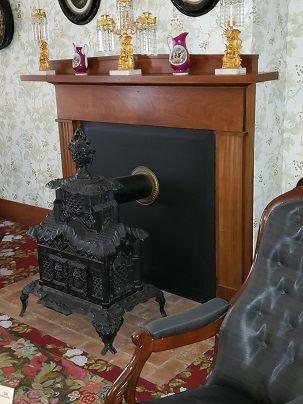
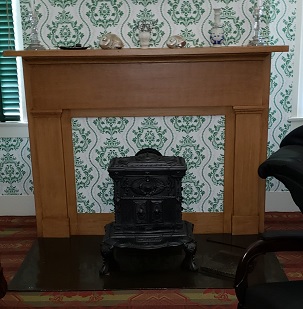
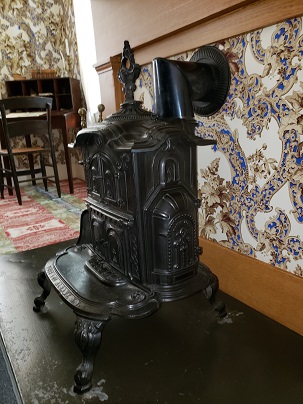
Here are some examples of the use of Franklin style parlor stoves at the Abraham Lincoln house in Springfield, Illinois. Note that each of these three Franklin style parlor stoves are exhausting to a fireplace originally built to burn firewood.
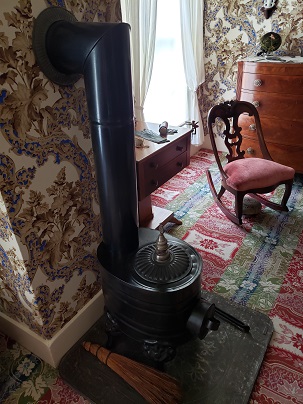
This fourth stove, in an upstairs chamber, is not a Franklin style parlor stove, but it is an antique wood burning stove. Small stoves like this one, with its vertical exhaust port, could have exhausted to the flue of a larger fireplace, but in this case they have it piped to a thimble in the chimney.
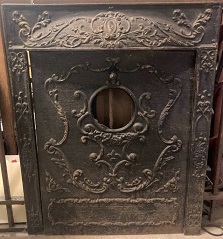
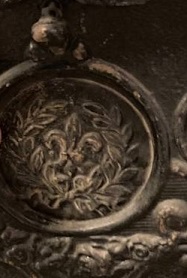
Decorative covers were sold for fireplaces that were constructed with the intent of burning coal. This example has an integrated port for Franklin style stoves. When a stove was not setup, a medallion would hang in the hole.
Many modern stoves have a reversible exhaust port, so they can either exhaust vertically or horizontally.
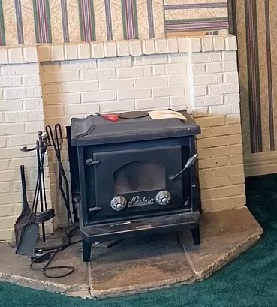
This modern steel stove is backed up to the fireplace, its exhausts out of a rear (horizontal) collar, uses stove pipe into the flue of the chimney.
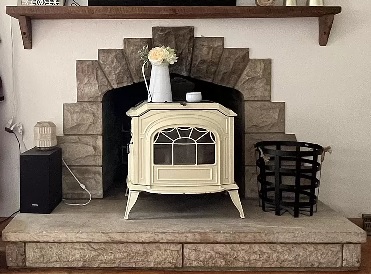
Same setup in this 1956 home.
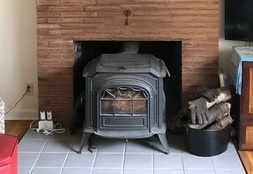
On this setup, you can more easily see the stove pipe.
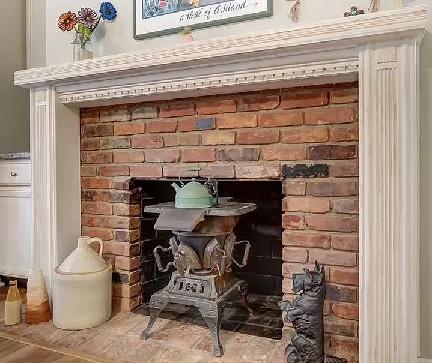
An antique coal burning laundry stove, with a full complement of sad irons, fits easily in the square shaped opening of this fireplace. It is evidently for decoration as no stove pipe is installed.
The second of the three ways a stove could be exhausted or a metal chimney pipe could be constructed to breach the roof of the house; or use the flue of a chimney by cutting a new exhaust port into its side. On flues made of metal pipe, exhaust ports are often referred to as T connectors, and for a masonry chimney the access port is drilled or chiseled out, if the masonry chimney is lined a round clay tile that is the thimble is fitted and the flue is cut open at that spot and the thimble fixed with mortar to the flue and chimney. The stove connects to the thimble or T connector using metal stove pipe. On existing fireplaces, the throat of the fireplace's flue is sealed and the thimble cut into the flue above or to the side of the fireplace mantel.
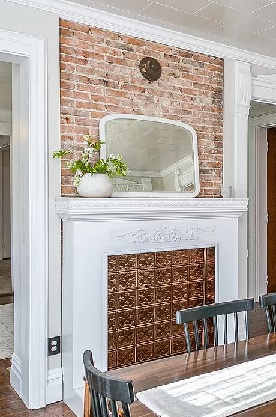
In this 1869 house, this fireplace has been sealed probably with brick, and an exhaust port cut through to the flue above the fireplace where stovepipe from a stove or range was run to. Due to the age of the house, it is likely this exhaust port does not have a thimble.
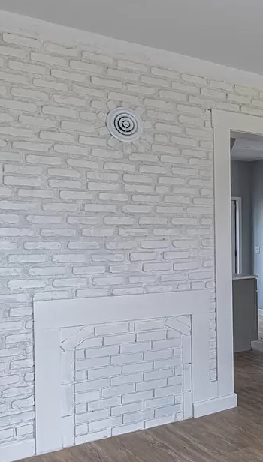
In this 1879 house, this fireplace has been sealed with brick (behind the pressed tin sheet), and an exhaust port cut through to the flue above the fireplace where stovepipe from a stove or range was run to. It looks like the port was cut large, then reset with bricks in a radial pattern to support a thimble. Some sort of vent cover is in the hole.